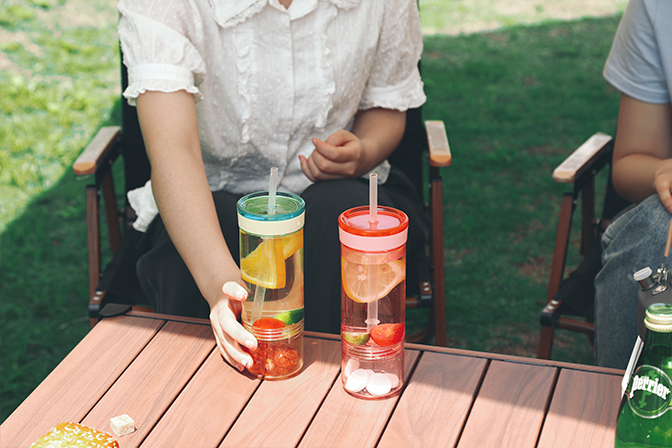
During the sweltering summer months, both outdoors and indoors, consumers often prefer using lightweight plastic sports water bottles for their convenience and portability. It’s no surprise, then, that these bottles represent a significant segment of the water bottle market. Predominantly crafted from plastic, sports water bottles offer the benefits of being cost-effective and highly customizable in terms of design. The demand for plastic has positioned it as a primary material in water bottle manufacturing, second only to stainless steel in our production facility. This article aims to shed light on the properties of various plastic materials frequently utilized in our manufacturing processes.
PP is a food-grade, BPA-free plastic that meets FDA/LFGB standards. It boasts high impact resistance and can withstand temperatures up to 100°C, making it suitable for dishwasher and microwave use. However, its use is limited in regions with plastic restrictions. PP has lower permeability and a matte surface texture, contributing to its affordability. It’s commonly used for sports bottles, coffee tumblers, lunch boxes, and other accessories.
Tritan is renowned for being the safest and healthiest plastic, free from BPA and compliant with FDA/LFGB standards. It’s the preferred material for baby bottles in Europe and America and is the most expensive plastic used in our BPA-free water bottle exports. Tritan is versatile, suitable for various manufacturing processes, and can replace PC (Polycarbonate) without needing mold adjustments. It’s widely used for space cups, sports bottles, children’s bottles, and transparent accessories.
SK plastic shares similar high-temperature resistance and safety features with Tritan but at a more affordable price. It’s typically used for budget-friendly, temperature-resistant bottles and can also meet FDA/LFGB standards with the highest quality SK material, supporting up to 100°C.
PETG is designed for lower temperatures, with a heat distortion threshold of 65-70°C. It offers clarity comparable to Tritan and is often chosen for cold water sports bottle manufacturer. The extrusion blow molding process results in a thinner bottle wall, around 0.5mm, which is less resistant to impacts compared to the standard 1.2-1.5mm thickness.
AS is a mid-range material known for its excellent clarity and lower cost. However, it’s more prone to scratches and cannot withstand temperatures above 80°C. AS is frequently used for straw cups, coffee cups, cold drink cups, and tea infusers.
We specialize in wholesale water bottles BPA free, offering a wide range of materials including PP, PC, Tritan, SK, PETG, acrylic, PCTG, AS, as well as TPE, silicone, stainless steel, glass, and ceramic. All materials are 100% food-safe, meeting European and American standards, and have passed third-party LFGB tests. In 2018, we expanded our factory to 89,000 square meters, adding new production lines and an electroplating plant, totaling 15 production lines. Our quality control is ensured by 18 dedicated QC inspectors.
For those interested in starting a bulk business with sports bottle manufacturer, our minimum order quantity ranges from 1,000 to 3,000 pieces, with a typical production timeline of about 30 days. Learn more about our BPA-free water bottles and start your inquiry today!

